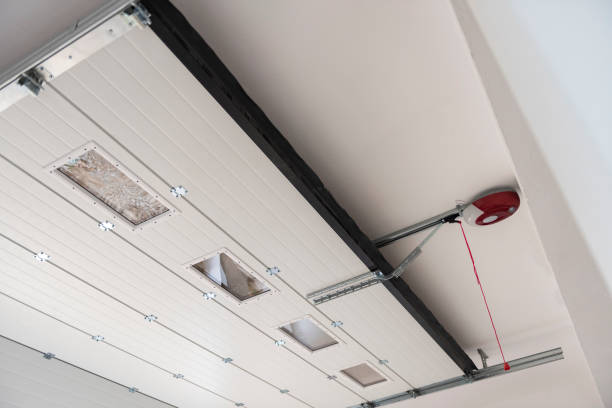
Modern homes are now indispensable without garage door openers, giving homeowners convenience and security. The days of lifting bulky garage doors by hand are long gone, thanks to these mechanical gadgets, which have completely changed how we access our garages.
Owning a garage door is one thing; knowing its functions and features is another. You’ll also learn from our article if your garage door opener needs to be checked.
What is a garage door opener?

Garage door openers are mechanical devices that simplify the operation of garage doors from a distance, providing convenience and security. These openers come with various models and features, including smart garage door openers, automatic systems, and residential garage door openers.
A notable feature in many modern garage door openers is the rolling code system, which generates a unique access code each time the remote is used, ensuring secure entry and preventing unauthorized access. Safety features such as motion sensors add a layer of protection by detecting movement inside the garage and stopping the door’s closing to prevent accidents or damage.
The main function of a garage door opener is to facilitate the smooth opening and closing of garage doors. Typically powered by a motor, the opener drives a trolley or chain system connected to the door, eliminating the need for manual lifting or closing. This feature is particularly beneficial for individuals with mobility issues or limited strength.
Garage door openers provide the convenience of remote control operation, offering features like Wi-Fi connectivity and compatibility with smart home systems such as Google Assistant. With these advancements, users can stay connected and conveniently share access to their garage. Belt drive and chain drive openers are common options, with belt drives known for their quiet operation and chain drives for their durability.
Garage door openers provide additional security measures in addition to convenience, enhancing the security of homes and other buildings. They work with large doors, too, whether you’re using a smart garage door opener.
Types of garage door openers
There are four primary varieties of garage door openers on the market, each with unique features, benefits, and drawbacks. Let’s examine them carefully:
Chain drive garage door opener
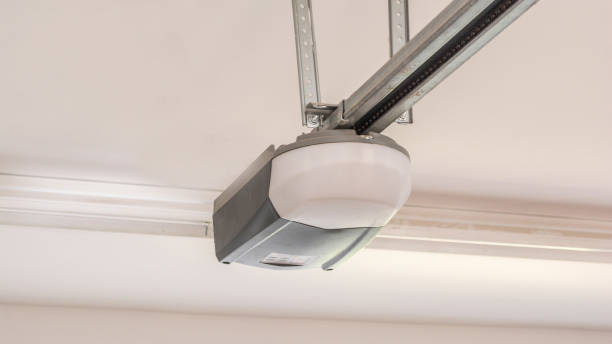
The most popular and cost-effective kind of garage door opener is this one. The garage door is moved along a track by a chain. Although it is extensively used and reasonably priced, it can be noisy. It moves the garage door along a track using a metal chain.
Pros: Chain drives have the advantages of being strong, dependable, and able to raise large doors. Additionally, they are inexpensive and generally accessible.
Cons: Chain drives can be noisy, making rattling and vibrating noises. Compared to other varieties, they frequently need more maintenance and may occasionally need lubrication.
Belt drive garage door opener

Belt-driven openers use a rubber belt to move the door. Residences with adjacent living spaces prefer them because they are quieter than chain drives. With belt-driven openers, the garage door is moved by a rubber belt rather than a chain. Typically, the belt is constructed of polyurethane or reinforced rubber, which offers smooth and noiseless functioning.
Pros: Belt drives are renowned for their quiet operation, making them a great option for garages located next to residential buildings. They provide dependable functioning and require less maintenance than chain drives.
Cons: Rubber belts used in belt drives may need to be replaced on a regular basis owing to wear and tear, and they can be more expensive than chain drives.
Screw drive garage door opener
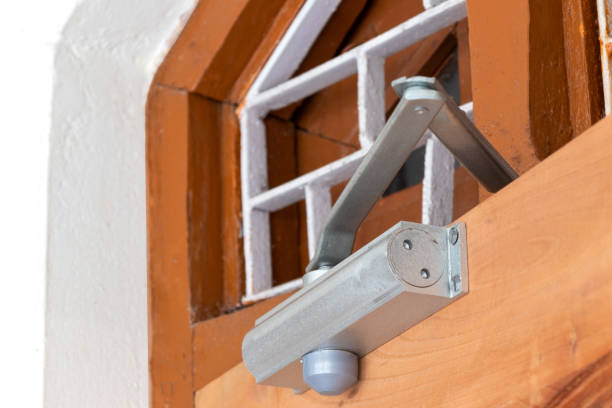
To move the door, these openers employ a threaded rod. Although they can be noisier, they require less maintenance than chain or belt drives. Screw drive openers use a threaded steel rod to move the door. The garage door is opened or closed by a carriage driven by the rod as it revolves.
Pros: Screw drives require less maintenance than chain or belt drives. They are also renowned for their dependability and efficiency. They are additionally quieter than chain drives.
Cons: Because metal rods can expand or contract, screw drives might not be appropriate for locations with high-temperature variations. They are often not advised for large or heavy garage doors.
Direct drive garage door opener
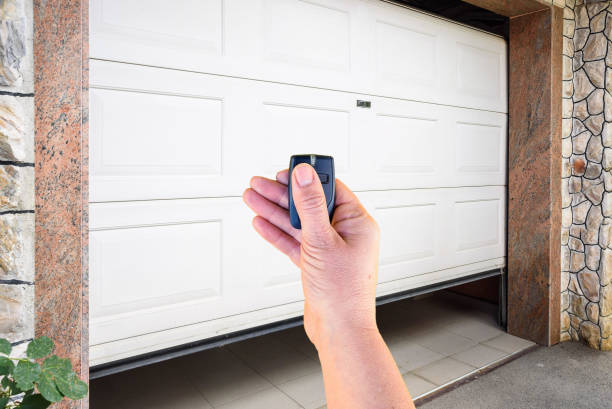
Direct drive openers move the door along a stationary chain with a stationary motor. They are renowned for their low maintenance requirements and quiet operation. The door is moved along a fixed chain or threaded rod by a stationary motor in direct drive openers, often called jackshaft openers. There is no need for a separate trolley system because the motor moves the door directly.
Pros: Direct drives benefit from being incredibly silent and operating smoothly. They are renowned for their dependability and require little upkeep.
Cons: The cost of direct drives is higher than that of other opener types. They may also have certain installation specifications. However, they are often appropriate for regular-sized residential doors.
Features of a garage door opener
Numerous features on garage door openers improve practicality, convenience, security, and safety. The following are some typical attributes of modern garage door openers:
Remote control
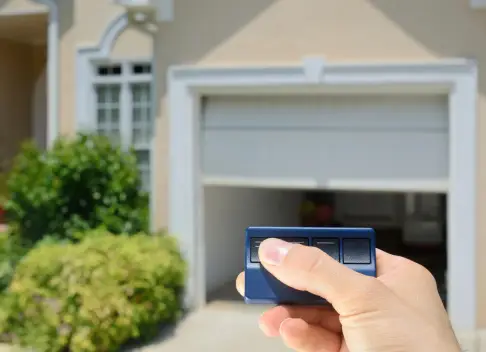
A handheld remote control is typically included with garage door openers. This makes it convenient to open or close the garage door while standing some distance away, such as inside or outside your automobile. You can split the remotes among family members using some openers’ many remotes.
Wal-mounted control panel
In the garage, a control panel is normally fixed to the wall. You can open, close, or stop the garage door movement using this different method of operation, which is accessible from inside the garage. Additional buttons for programming and modifying settings may be present on the control panel.
Rolling code technology
This security measure guard against efforts to grab or hack code. Rolling code technology creates a new access code every time you use the remote. This makes it more challenging for uninvited guests to figure out the code and enter your garage.
Safety sensors
Safety sensors on garage door openers can spot objects or barriers in the way of a closing door. These sensors produce an oblique invisible beam that spans the garage door’s opening. The sensors will immediately reverse the door’s motion if the beam is broken to avoid mishaps or damage.
Manual release
A manual release mechanism lets you manually disconnect the opener and open the garage door in case of a power outage or mechanical issue. With the help of this feature, you can still enter your garage even if the garage door opener isn’t working.
Battery backup
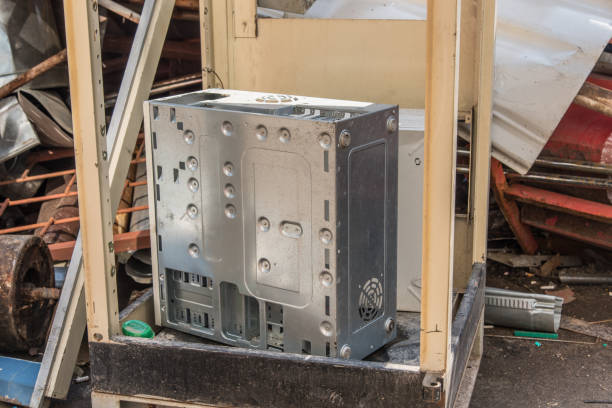
Several garage door openers offer a battery backup system. This feature enables the opener to function even when there is no electricity. You can still open and close your garage door without power with a battery backup.
Motion detection
Motion sensors are built into certain garage door openers. When someone enters the garage, these sensors may detect movement and turn on the lights.
Smartphone integration and smart home compatibility
Thanks to integrating many contemporary garage door openers with smartphone apps, you may operate the door remotely with your mobile device. This function offers convenience and peace of mind by allowing you to control and monitor your garage door from anywhere.
Lighting options
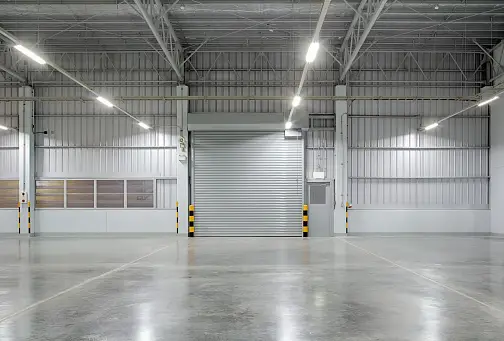
Some garage door openers can link to additional lighting sources or have built-in illumination. These lights may illuminate the garage when the door opens, increasing security and visibility.
Timer-to-close function
With the help of this feature, you may program the garage door to close automatically after a certain period. It might be especially helpful if you frequently forget to lock the door after leaving the building to keep your garage secure.
Garage door opener accessories
Accessories are available to enhance your garage door opener’s usefulness, convenience, and security. The following are some typical add-ons for garage door openers:
Keypad entry system
You can use a keypad entry system to unlock the garage door by entering a special code. Because of this, no physical key or remote control is required. On the outer wall of the garage, keypads are generally mounted, allowing secure access without additional remote controls or keys.
Additional remotes
You can buy more remote controllers if you have a large family or require extra remotes for various vehicles. In order to make it convenient, this ensures that everyone who needs access to the garage has their remote.
Wireless keychain remote
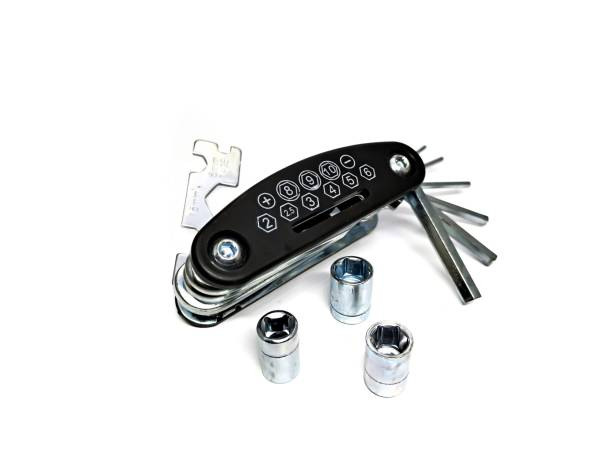
A wireless keychain remote is a remote control that may be attached to your keychain. It gives you quick and simple access to your garage door opener, enabling you to open and close the door without carrying extra remote controls or memorizing access codes.
Garage door monitor
A garage door monitor is a tool that gives you up-to-the-minute details regarding the condition of your garage door. Typically, it consists of a display unit mounted within your home and a sensor determining whether the door is open or closed.
Garage door opener apps
You can manage and monitor your garage door opener from a mobile device, thanks to the many smartphone apps that garage door opener manufacturers provide. These apps often offer features like real-time door status updates, remote control operation, and notification of door openings and closings.
Battery backup kit
Other garage door openers offer a separate battery backup package as an accessory, while some have built-in battery backup. In order to provide continuous access to your garage, this package contains a backup power supply that enables your opener to run even during power outages.
Surge protector
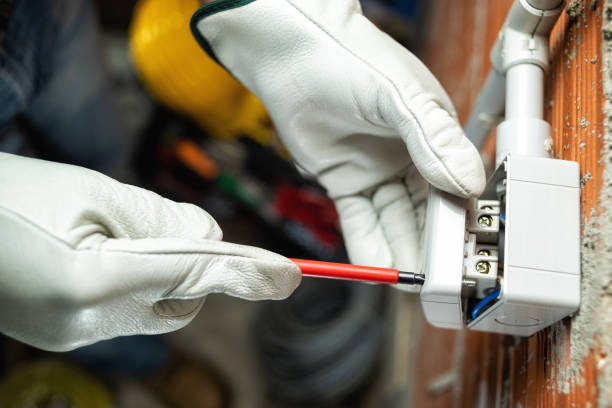
An electrical surge protector component protects your garage door opener from power spikes. It aids in preventing harm from voltage alterations or lightning strikes to the opener’s delicate electronic components.
Lubricants and maintenance kits
Your garage door opener’s lifetime and smooth operation depend on proper maintenance. For smooth operation, lubricants made specifically for garage door mechanisms help to reduce friction.
Home automation integration
Some garage door openers are compatible with home automation systems, enabling you to operate the opener using voice-activated assistants like Amazon Alexa, Google Assistant, or smart home hubs.
What to Look for in a garage door opener
A number of important elements need to be taken into account while looking for a garage door opener. Here is a list of critical indicators to watch out for:
Type of drive mechanism
Choose the drive mechanism type that best meets your demands. Chain drive, belt drive, screw drive, and direct drive are typical alternatives. Think about the maintenance requirements, durability, noise level, and smoothness of operation for each type.
Motor power

Verify the horsepower (HP) rating of the opener’s motor. Your garage door’s weight and size should be handled by the motor power, which should be sufficient.
Safety features
Make sure the opener has all the necessary safeguards. Look for emergency release cords for manual operation during power outages or emergencies, safety sensors that detect impediments and immediately reverse the door’s motion, rolling code technology to prevent code theft, and other features.
Remote control and keypad entry
Consider the ease of the remote control when comparing it to keypad entry. Choose a system that comes with several remotes or enables adding more remotes as necessary.
Security

To safeguard your garage and house, look for security features. As was already noted, a key security measure that prevents unauthorized access is rolling code technology.
Opener speed and smoothness
Pay attention to the opener’s speed and smoothness as it moves the door. To reduce noise and wear on the door, look for openers with variable speed settings and smooth start and stop capabilities.
Opener size and compatibility
Check the opener’s size and weight to ensure they are appropriate for your garage door. Several openers have weight restrictions, so confirm that they can meet the demands of your door.
Warranty and customer support
Choose a recognized brand that offers a strong product warranty for warranty and customer support. A guarantee gives customers peace of mind and shows that the manufacturer supports the opener’s quality and longevity.
Energy efficiency
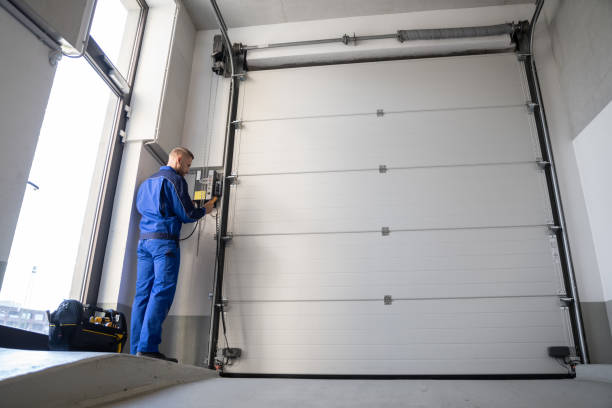
Verify the energy efficiency of the opener. Look for openers that consume less power during inactive or standby modes. Openers that use less energy can help you save money and use less energy overall.
Brand reputation and reviews
Read customer reviews and do some research on the reputation of the brand. Look for companies with a solid track record, happy customers, and dependable customer service.
Bottom line
In conclusion, it is critical to take into account factors like the type of drive mechanism, motor power, safety features, ease of use of a remote control, security, opener speed, and smoothness, compatibility with your garage door, warranty, and customer support, energy efficiency, and brand reputation when shopping for a garage door opener.
We can answer all your questions if you need to inquire about your garage door. You can also contact us for any garage door fixes.

[…] a good idea to confirm that your current garage door opener can support the added weight of a wood garage door and that the opener is compatible with the new […]